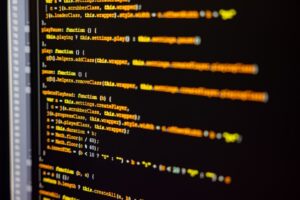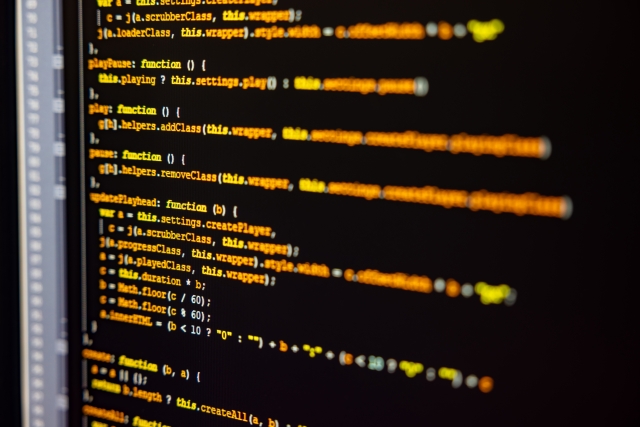要約
Pythonは、シンプルで扱いやすいプログラミング言語です。
ビジネス分野でも、その高い生産性や開発効率、優れたデータ解析能力などから愛用されることがあります。
本記事では、Pythonを実際にビジネスに活用した企業の例を、コードとともに紹介します。
詳細内容

1. UberUberは、車の供給量を最適化するためにPythonを使用しています。
彼らのアルゴリズムは、渋滞を回避し、時間と燃料を節約し、運転手がより多くの乗客を運べるようにするために、リアルタイムのトラフィック情報を使用します。
例えば、以下のようなPythonコードで、Google Maps APIを使用してリアルタイムの交通情報を取得することができます。
“` python
import googlemaps# Google Maps API Key
gmaps = googlemaps.Client(key=’YOUR_API_KEY’)# Geocoding an address
geocode_result = gmaps.geocode(‘1600 Amphitheatre Parkway, Mountain View, CA’)# Get the best directions taking into account the current traffic conditions
directions_result = gmaps.directions(“Sydney Town Hall”,
“Parramatta, NSW”,
mode=”transit”,
departure_time=now)
“`2. DropboxDropboxはPythonを広範囲に使用しています。
彼らの主な分野は、Pythonによるサーバー側のWeb開発です。
特に、PythonのWebフレームワークであるDjangoを使用して、DropboxのWebアプリケーションを開発しています。
また、DropboxはPythonの優れた機械学習ライブラリであるSciPyを使用しています。
例えば、以下のようなPythonコードで、ニューラルネットワークを使用して画像を自動でろ選別することができます。
“` python
from scipy import misc
import numpy as np
import matplotlib.pyplot as plt
import urllib# Load and display the image
url = ‘https://upload.wikimedia.org/wikipedia/commons/5/54/Five_European_currencies.jpg’
img = misc.imread(urllib.urlopen(url))
plt.imshow(img)
plt.show()# Preprocess the image
img = misc.imresize(img, (300, 300))
img = img.astype(‘float32′) / 255# Load the pre-trained neural network
from keras.applications import VGG16
model = VGG16(weights=’imagenet’, include_top=False)# Extract the features of the image using the neural network
features = model.predict(img.reshape(1, 300, 300, 3))# Classify the image using a pre-trained classifier
from keras.applications.imagenet_utils import decode_predictions
decoded = decode_predictions(features)[0]
print(decoded)# Output:
# [(‘n04254571’, ‘soap_dispenser’, 0.28299788),
# (‘n04493381’, ‘tub’, 0.17926279),
# (‘n03160309’, ‘dam’, 0.10395433),
# (‘n02894605’, ‘breakwater’, 0.074015732),
# (‘n02795169’, ‘barometer’, 0.056214806)]
“`3. InstagramInstagramは、Pythonを使用して、サーバー側のWeb開発に重点を置いています。
特に、PythonのWebフレームワークであるDjangoを使用して、InstagramのWebアプリケーションを開発しています。
また、InstagramはPythonのプログラマブルなインタフェースであるInstagram APIを提供しており、Pythonを使用してInstagram APIを使用することができます。
以下は、PythonのRequestsライブラリを使用して、Instagram APIから自分のプロフィール情報を取得するPythonコードの例です。
“` python
import requests# Instagram API Access Token
access_token = ‘YOUR_ACCESS_TOKEN’# Make a request to the Instagram API to fetch profile information
response = requests.get(‘https://api.instagram.com/v1/users/self/?access_token=’ + access_token)# Extract the profile information from the JSON response
profile = response.json()[‘data’][‘counts’]
print(‘Followers:’, profile[‘followed_by’])
print(‘Following:’, profile[‘follows’])
print(‘Posts:’, profile[‘media’])
“`4. YouTubeYouTubeは、Pythonを使用して、サーバー側のWeb開発に重点を置いています。
特に、PythonのWebフレームワークであるDjangoを使用して、YouTubeのWebアプリケーションを開発しています。
また、YouTubeはPythonのプログラマブルなインタフェースであるYouTube APIを提供しており、Pythonを使用してYouTube APIを使用することができます。
以下は、PythonのGoogle APIクライアントライブラリを使用して、YouTube APIから自分のチャンネル情報を取得するPythonコードの例です。
“` python
import os
import google.oauth2.credentialsfrom googleapiclient.discovery import build# YouTube API Credentials
client_id = ‘YOUR_CLIENT_ID’
client_secret = ‘YOUR_CLIENT_SECRET’
refresh_token = ‘YOUR_REFRESH_TOKEN’# Build the YouTube API client
credentials = google.oauth2.credentials.Credentials(
None,
client_id=client_id,
client_secret=client_secret,
refresh_token=refresh_token,
token_uri=’https://accounts.google.com/o/oauth2/token’
)youtube = build(‘youtube’, ‘v3′, credentials=credentials)# Get information about the authorized user’s YouTube channel
channels_response = youtube.channels().list(
mine=True,
part=’snippet,contentDetails,statistics’
).execute()channel = channels_response[‘items’][0]
print(‘Channel:’, channel[‘snippet’][‘title’])
print(‘Views:’, channel[‘statistics’][‘viewCount’])
print(‘Subscribers:’, channel[‘statistics’][‘subscriberCount’])
“`


コメント